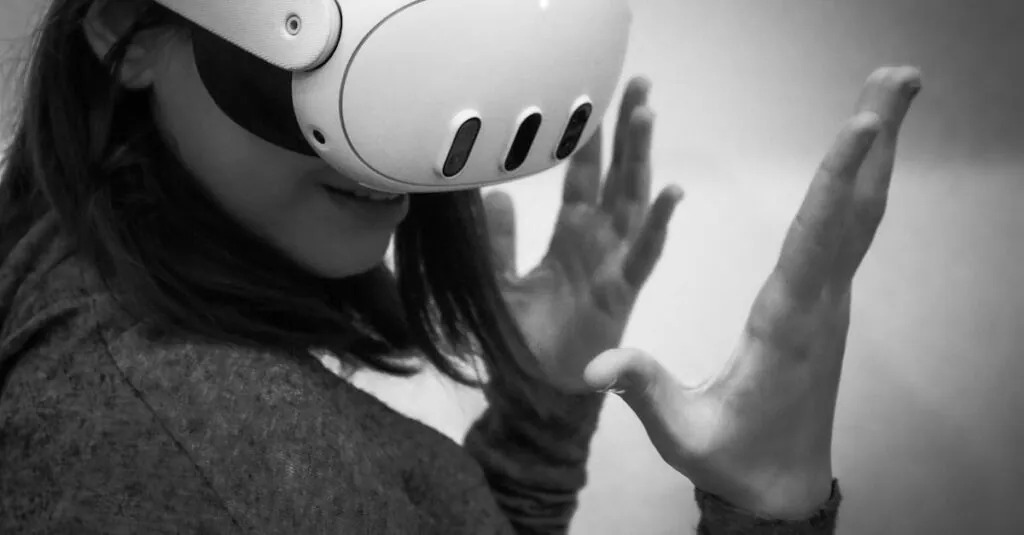Table of Contents
ToggleImagine stepping into a world where digital elements blend seamlessly with reality—welcome to augmented reality! With Unity AR Foundation, developers can create mind-blowing experiences that make users question what’s real. Whether it’s a virtual dinosaur in your living room or a digital art piece on your wall, the possibilities are endless.
Overview of Augmented Reality
Augmented reality enhances the real world by overlaying digital information onto physical environments. Users interact with virtual objects, which seamlessly blend into their surroundings. Unity AR Foundation simplifies the development process, enabling creators to design sophisticated AR applications efficiently.
Applications of augmented reality span various industries. Retailers deploy AR for trying on virtual clothing or visualizing furniture in homes. Education benefits through interactive lessons, where students explore 3D models of historical artifacts or complex biological structures.
Entertainment thrives with augmented experiences in gaming and media. Players navigate through AR games that superimpose characters onto real-world locations. Brands leverage this technology for engaging marketing campaigns, offering unique experiences that attract consumers.
Unity AR Foundation provides tools for tracking and recognition, making it easier to implement essential features. Developers can tap into real-world features like planes, points, or image recognition. With its cross-platform capabilities, Unity AR Foundation supports both iOS and Android devices, broadening potential user bases.
Community involvement shapes the evolution of augmented reality. Developers share insights and techniques, fostering a collaborative environment that accelerates innovation. Feedback from users guides improvements in functionality, ensuring AR applications remain relevant and user-centric.
Collaboration across disciplines enhances the quality of AR experiences. Artists and technologists merge their skills to create visually stunning environments. By uniting expertise, teams produce applications that captivate audiences and push the boundaries of what augmented reality can achieve.
Introduction to Unity AR Foundation
Unity AR Foundation empowers developers to create compelling augmented reality experiences. This framework streamlines the process, providing robust tools for both seasoned developers and beginners.
Key Features of Unity AR Foundation
Unity AR Foundation includes essential features such as plane detection and image tracking. Plane detection enables accurate identification of surfaces, allowing virtual objects to appear grounded in real environments. Image tracking facilitates recognition of specific images, triggering the display of corresponding digital content. Additionally, this foundation supports multiple tracking methods, enhancing AR experiences. Users can implement light estimation to ensure realistic interactions with virtual objects, adapting visuals based on surrounding lighting conditions. Such features together enable the creation of immersive and interactive applications that captivate users.
Supported Platforms and Devices
Unity AR Foundation provides broad platform compatibility, supporting both iOS and Android devices. Developers can design applications that run seamlessly on various smartphones and tablets. This flexibility ensures a broader audience can access AR experiences. Hardware requirements are minimal, meaning even mid-range devices can deliver engaging augmented reality applications. Unity’s support for multiple devices also includes continuous updates, optimizing performance and expanding capabilities. This commitment to inclusivity allows a diverse range of users to experience innovative AR solutions.
Applications of Augmented Reality
Augmented reality (AR) finds diverse applications across various industries, transforming how users interact with information and their environment.
Gaming
Gaming experiences benefit significantly from AR technology. Players engage with virtual characters superimposed over real-world environments, creating immersive narratives. Titles like Pokémon GO exemplify this, encouraging exploration of physical locations while capturing digital creatures. Developers using Unity AR Foundation can create innovative mechanics, incorporating location-based challenges. Enhanced graphics and real-time interactivity elevate user involvement, attracting a broad audience. AR gaming encourages social interaction, fostering community ties. Expect continued growth in this sector as creativity and technology evolve.
Education
Education leverages AR to create interactive and engaging learning environments. Students immerse themselves in subjects like history and biology through 3D models that enhance understanding. Applications allow learners to visualize complex concepts, such as molecular structures or historical landmarks, making the material more relatable. Unity AR Foundation simplifies the development of educational tools, empowering educators to craft customized content that suits diverse learning styles. Increased engagement results in better retention of information. AR in education bridges the gap between theory and practice, enriching classroom experiences.
Healthcare
Healthcare applications benefit through enhanced training and patient education. Medical professionals can practice procedures using AR simulations, gaining confidence before real-life situations. Visualizing anatomy on 3D models aids in understanding complex medical concepts. For patients, AR provides visual explanations about conditions or treatments, improving comprehension. Unity AR Foundation manufacturers can create tools tailored to specific medical fields, ensuring accuracy and relevance. Integration of AR in healthcare leads to informed patients and competent practitioners. Advancements in AR technology promise to revolutionize medical education and patient support systems.
Getting Started with Augmented Reality Using Unity AR Foundation
Augmented reality offers exciting opportunities for developers. Unity AR Foundation streamlines the process, making it accessible for anyone looking to create AR experiences.
Installation and Setup
Begin by installing Unity Hub, which allows for effective management of projects. Choose the latest Unity version that supports AR Foundation. After installation, add the AR Foundation package via the Package Manager. Users should also install the ARKit or ARCore packages to enable platform-specific features. Following that, configure the project settings by ensuring the correct build platform is selected. Then, set up the necessary permissions for camera access, allowing AR applications to recognize environments.
Creating Your First AR Experience
Next, create a new Unity project after completing the setup. Import the AR Foundation and platform-specific packages. Once that’s done, add an AR Session and AR Session Origin; these components serve as the foundational setup for AR experiences. Users should then incorporate AR components such as AR Plane Manager to detect flat surfaces and AR Interaction Manager for interactive elements. Design a simple scene by placing virtual objects within the AR environment. Test the application on a device equipped with AR capabilities to see the experience in action.
Advantages of Using Unity AR Foundation for AR Development
Unity AR Foundation offers several benefits for augmented reality development. First, it provides a unified framework that supports both iOS and Android devices, increasing accessibility for developers and users alike. Performance optimizations reduce the hardware demands, allowing mid-range devices to run complex AR applications smoothly.
Next, the framework simplifies the process of implementing key AR features. Developers can easily integrate plane detection and image tracking, enabling virtual objects to interact naturally with the real world. This enhances user experiences as they engage with content that feels truly anchored to their environment.
Community support stands out as an additional advantage. Collaborators share resources, best practices, and innovative solutions, fostering growth within the AR development landscape. Feedback from users helps improve applications, ensuring they remain relevant and user-friendly.
Also, Unity’s continuous updates enhance the foundation’s capabilities, keeping pace with evolving technologies. Regular improvements help developers stay ahead in the competitive market. Familiarity with Unity’s interface reduces the learning curve for new developers, allowing them to begin creating immersive applications quickly.
In entertainment sectors, AR experiences become more captivating through Unity AR Foundation. Developers can create interactive storytelling that blends virtual and physical worlds seamlessly. This design fosters deeper engagement, encouraging users to explore and interact beyond traditional formats.
Finally, AR Foundation empowers industries like education and healthcare. It facilitates the creation of interactive learning tools that visualize complex subjects, enhancing retention. Design features in Unity help educators and professionals create tailored experiences that resonate with their audiences.
Challenges and Limitations
Challenges in augmented reality development with Unity AR Foundation arise from technical constraints and hardware limitations. New developers often face a steep learning curve when tackling AR features like plane detection and image tracking. Users might encounter inconsistent performance across devices, as capabilities can vary significantly among iOS and Android smartphones.
Limitations also exist in user experience. Heavily demanding applications may lead to technical glitches or crashes on lower-end devices. Environmental factors, such as insufficient lighting or complex backgrounds, can impede accurate tracking, reducing the effectiveness of virtual object placement.
Designers need to consider user interface challenges specific to AR. Interaction with virtual elements in physical spaces requires intuitive gesture controls. Not all users possess the necessary familiarity with AR interactions, which can lead to frustration and disengagement.
Integration into existing systems can present additional hurdles. Developers may struggle when combining AR features with traditional applications, needing extensive testing to ensure seamless functionality. This complexity can slow down project timelines, delaying deployment.
Accessibility remains a concern as well. Although AR Foundation supports various devices, disparities in hardware capabilities can exclude specific user groups, limiting engagement. Developers must prioritize inclusivity to enhance widespread applicability of their AR solutions.
Community support serves as a crucial component for overcoming these challenges. As developers share insights and solutions, they can address common issues, fostering an atmosphere of collaboration. Continuous updates from Unity play a significant role in enhancing performance and expanding capabilities, guiding developers toward more effective AR experiences.
Augmented reality is transforming how users interact with the world around them. Unity AR Foundation stands out as a powerful tool for developers aiming to create immersive experiences. Its versatility across various industries ensures that AR applications are not only innovative but also accessible to a broad audience.
As the AR landscape continues to evolve, collaboration among developers and community involvement will drive further advancements. By leveraging Unity AR Foundation’s capabilities, creators can push the boundaries of what’s possible in augmented reality. The future of AR looks promising, with endless opportunities for engaging applications that enhance everyday life.







